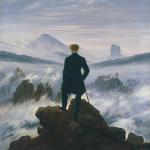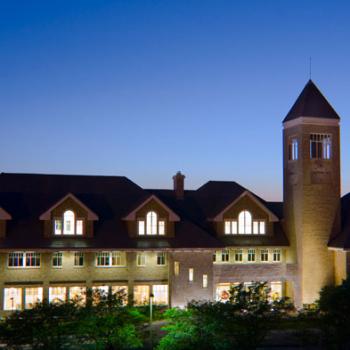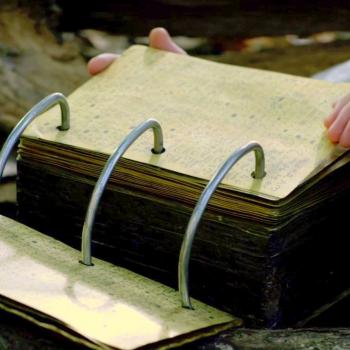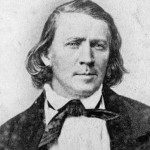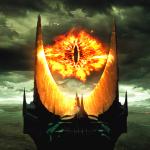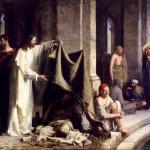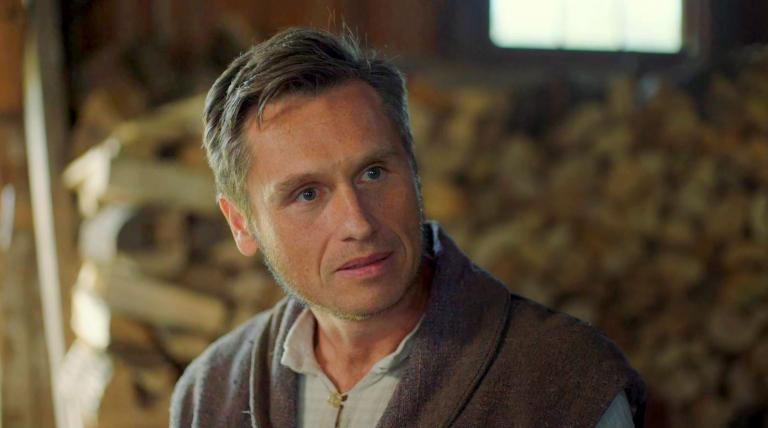
(Still photograph by James Jordan)
Here are some notes about certain of the witnesses to the Book of Mormon — both official and unofficial — that I’ve drawn from the fourth chapter of Richard Lyman Bushman’s book Joseph Smith’s Gold Plates: A Cultural History (New York: Oxford University Press, 2023):
Emma viewed herself as one who had never left the faith. “I know Mormonism to be the truth; and believe the Church to have been established by divine direction.” She knew she had “been called apostate; but I have never apostatized, nor forsaken the faith I at first accepted.” She felt she had good reasons for her belief. In the interview, she showed the rationalist bent of her mind. She said nothing about her love for her husband or her trust in his character. Hers was not a sentimental or spiritual faith. It was based on her observation of Joseph translating. Nothing she knew about him qualified him to dictate the book. “It is marvelous to me,” she said, “as much so as to any one else.” (50)
The immediate family was more concerned about where to conceal the plates than to establish the plates’ reality. . . . The family seemed not to have been troubled by the question of the plates’ existence. (51)
Martin Harris is commonly portrayed by critics of the Book of Mormon and of the Restoration as a credulous and unstable loon. I’ve argued that this caricature goes starkly against solid historical data and rests on unsubstantiated yarns and rumors — see my Meridian Magazine column “Martin Harris: Skeptic or Gullible Dupe?” — and I’m pleased to see that Richard Bushman concurs with my verdict:
Martin was the most skeptical of all the early believers. (51)
The historical accounts are simply irreconcilable (unless they are flatly ignored) with the claim the no plates existed:
William Smith “thum[ b] ed them through the cloth and ascertained that they were thin sheets of some kind of metal.” Martin Harris said he “hefted the plates many times” and once held them on his knee for an hour and a half. William Smith lifted them in a pillowcase. People heard the leaves “rustle” when thumbed and a “jink” when they were put in a box. Emma said the individual plates were “pliable like thick paper.” The accounts left little room to doubt that something heavy and plate-like existed in the boxes, the cloths, and the knapsacks they saw and felt. (53)
Here’s a passage from the reminiscences of Lucy Mack Smith, the mother of the Prophet Joseph:
“Soon after they came, all of the male part of the company, together with my husband, Samuel [Smith], and Hyrum [Smith], retired to a place where the family were in the habit of offering up their secret devotions to God. They went to this place because it had been revealed to Joseph that the plates would be carried thither by one of the ancient Nephites.” (55)
It’s sometimes confidently asserted — I saw it again just a couple of days ago — that none of the witnesses to the Book of Mormon saw or touched the plates uncovered. Again, one can only make such an assertion if one dismisses the primary source materials:
When John Whitmer was later asked if he saw the plates “covered with a cloth,” he answered no. Joseph “handed them uncovered into our hands, and we turned the leaves sufficient to satisfy us.” (56)
One is still obviously free, of course, to reject the testimony of the witnesses. But simply ignoring that testimony as if it didn’t exist just won’t do — let alone proceeding to create one’s own evidence-free story as a substitute:
That was the kind of testimony rationalists could understand. It assimilated the plates into the ordinary world of material objects. No guardian spirits, no angels, no magical rituals. If accurate, the testimony of the eight witnesses satisfied the requirements of the rational enlightenment for sensory evidence. The problem was that too much rested on the testimonies. Belief in what they said implied acceptance of too many fabulous items: an angel appearing in Manchester, a simple young man conversing with the heavens, another Bible from ancient America. The problem was posed by Cornelius Blatchly, a onetime Quaker who wrote Martin Harris in 1829 only a few months after the witnesses said they saw the plates. Blatchly wanted to know more about this “wonderful record” but only if it could be “substantiated by indisputable evidences and witnesses.” In November 1829, Oliver Cowdery wrote back on Martin’s behalf. Knowing his account was fabulous, he insisted the witnesses could not have been mistaken in what they saw. “It was a clear, open beautiful day, far from any inhabitants, in a remote field, at the time we saw the record.” It was “brought and laid before us, by an angel, arrayed in glorious light.” Blatchly thanked Cowdery for his account but concluded that “so important a matter as a new bible” required “the most incontrovertible facts, circumstances and proofs.” Oliver’s account, in Blatchly’s judgment, failed to meet that high standard. (56)
And, finally, just a reminder of one of the most unexpected testimonies of the Book of Mormon, from one of what I call the unofficial or informal witnesses:
John’s mother, Mary Whitmer, another plain-spoken witness, said she saw the plates when she went to do the milking. In 1878, years after the event, her son said that his mother had grown weary with the work of housing and feeding the translating contingent. In June 1829, Joseph, Oliver, and Emma squeezed into an already crowded household. Emma must have been pressed into service, but the two men were of no help. They spent their days in an upstairs room recording the translation. Mary Whitmer had reason to complain of the added burden. Mary’s son David told Orson Pratt and Joseph F. Smith in 1878 that as his mother was going to milk the cows, an old man carrying a pack met her in the yard. He recognized that “you are tried because of the increase of your toil,” and so “it is proper therefore that you should receive a witness that your faith may be strengthened.” Then he took the plates out of the knapsack and showed them to her. Whitmer said that seeing the plates “nerved her up for her increased responsibilities.” One of Mary’s grandsons, John C. Whitmer, added that “this strange person turned the leaves of the book of plates over, leaf after leaf, and also showed her the engravings upon them.” Then he vanished with the plates.
Mary Whitmer did not record the experience herself, but she told the story to her grandchildren “on several occasions.” Her account was of a piece with other stories the Whitmers told. David Whitmer linked his mother’s angel to the “very pleasant, nice-looking old man” he had seen on the road while bringing Joseph and Oliver to Fayette. His nephew John also described the visitor as “a stranger carrying something on his back that looked like a knapsack” and “spoke to her in a kind, friendly tone.” (57)
Posted from Honolulu, O’ahu, Hawai’i



